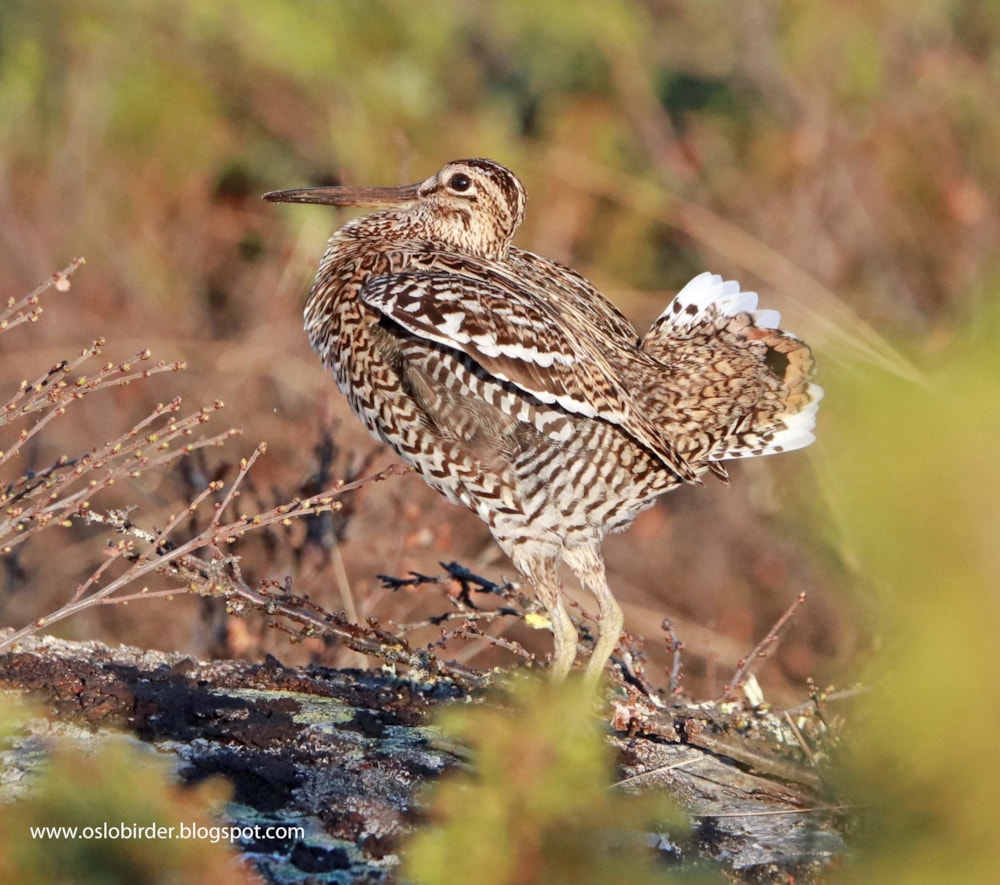A new study has revealed the unprecedented heights and distances that Great Snipe can reach on migration.
Research recently published in Current Biology has found that the species can rise nearly 2,500 m in elevation at dawn and descend again at dusk each day, perhaps to avoid overheating from daytime solar radiation by climbing to higher, cooler altitudes.
The birds also spent much more time in higher elevations than previously thought – during its migration, one bird flew at nearly 8,700 m (almost as high as Mount Everest) for five consecutive hours, which may be the highest altitude ever recorded for a tracked migrating bird.
"Anyone who studies animal behaviour will often find that there is huge variation between individuals. But these birds almost do the exact same thing," says lead author Åke Lindström, a professor in the biodiversity department at Lund University in Sweden. "In the Great Snipe's migration pattern, we found a very, very strong diel cycle: higher in the day, lower at night. They seem to have found a behaviour that's really optimal for them."

The study found Great Snipe can fly at altitudes of up to 8,700 m (Simon Rix).
Great Snipe is no stranger to long flights, flying 6,000 km non-stop from breeding grounds in Sweden to Africa's Sahel region for a month-long stopover in autumn, traveling 1,500-3,000 km within Africa to their final wintering grounds, and migrating 5,200 km back to south-east Europe in the spring. But until now, scientists have only been able to manage a snapshot of the birds' journeys.
Previous research tracked the birds only when they passed in range of radar, so scientists commonly assumed that the snipe maintained a steady, favourable cruising altitude to minimise energy loss. But thanks to new technology, scientists can now track birds throughout their entire migration.
In this study, Lindström and his team attached mini data-loggers, weighing only about 1% of the birds' total body mass, to the legs of 14 Great Snipe. The loggers recorded measurements on activity, air pressure, and temperature every hour during their flights.
The researchers found a distinct pattern in all three seasonal migrations. After a night at moderate to high altitudes, the birds ascended to very high altitudes at dawn, stayed at those high altitudes during the day, and descended again in late afternoon or evening to heights similar to the previous night. The snipe typically flew at about 1,600-2,100 m above sea level at night and 3,900-4,500 m above sea level during the day.
But why the snipes change their elevation depending on time of day remains an unanswered question. Wind conditions or speed, which are usually the primary factors that influence migration, do not consistently change between day and night. The presence of the sun, however, does, leading to three possible explanations.
First, although flying higher in daylight could help the snipes find landmarks, migratory birds are known to be excellent navigators that don't need to rely on the physical landscape for directions. Higher elevation during the day could also help Great Snipe escape birds of prey that hunt during the daytime.
But the most likely reason for this daily elevation change comes from the sun's warmth. When flying, Great Snipe flap their wings seven beats per second, generating large amounts of body heat. At night when temperatures are cooler, this isn't a problem. But during the daytime, the sun's rays most likely increase their body temperature even more. Flying more than 2,000 m higher during the day, where the air is 13°C cooler, therefore, might help the birds keep from overheating. Such a theory was recently proposed for similar patterns seen in Great Reed Warbler migration.
Reference
Lindström Å, Alerstam T, Andersson A, Bäckman T, Bahlenberg P, Bom R, Ekblom R, Klaassen R, Korniluk M, Sjöberg S & Weber J. 2021. Extreme altitude changes between night and day during marathon flights of great snipes. Current Biology. DOI: doi.org/10.1016/j.cub.2021.05.047.


